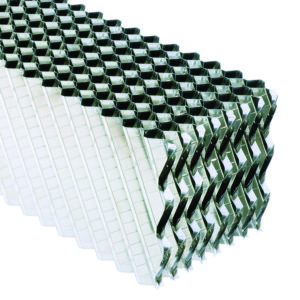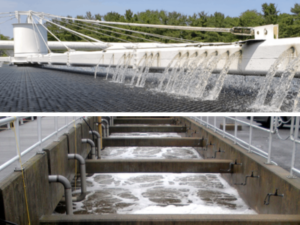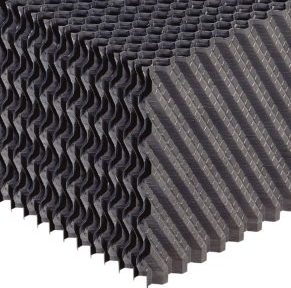
Brentwood’s ability to manufacture a wide range of products for our customers is not necessarily limited to our ability to do so in plastics. Some customers are actually seeing an increase in the need for fill products made from other materials, stainless steel in particular.
For that reason, we offer CF1900SS, which is produced from high-quality, 304L stainless steel. These fills are designed for special applications where extreme temperatures or flammability concerns restrict the use of plastic materials.
We have found that this product is often utilized in factory-assembled counterflow towers requiring non-combustible materials, such as in major cities and high-rise buildings. However, CF1900SS can also be bottom-supported for use in similar crossflow situations. (PVC CF1900 was utilized successfully in crossflow towers for years until crossflow-specific fills were produced). Additionally, the stainless steel product has been popular for applications where existing tile (ceramic block) fill is being replaced for increased longevity and thermal performance with the added advantage of decreased labor.
CF1900SS can also function as a top layer for factory-assembled counterflow towers that experience high temperatures, such as in steel mills or other process applications. This could help to prevent annual fill change-outs due to heat damage, and CF1900SS has the added benefits of chemical and bacterial resistance, which can reduce biological growth.



Thanks for helping me understand that there are fill media options used for special applications when there are extreme temperatures or flammability concerns which is why plastic materials cannot be used. I can imagine how using the right media or materials would be important for fabrication processes like those. And I think that the most important thing of all is to ensure the safety of the workers in the vicinity and the actual operators of the equipment as well.